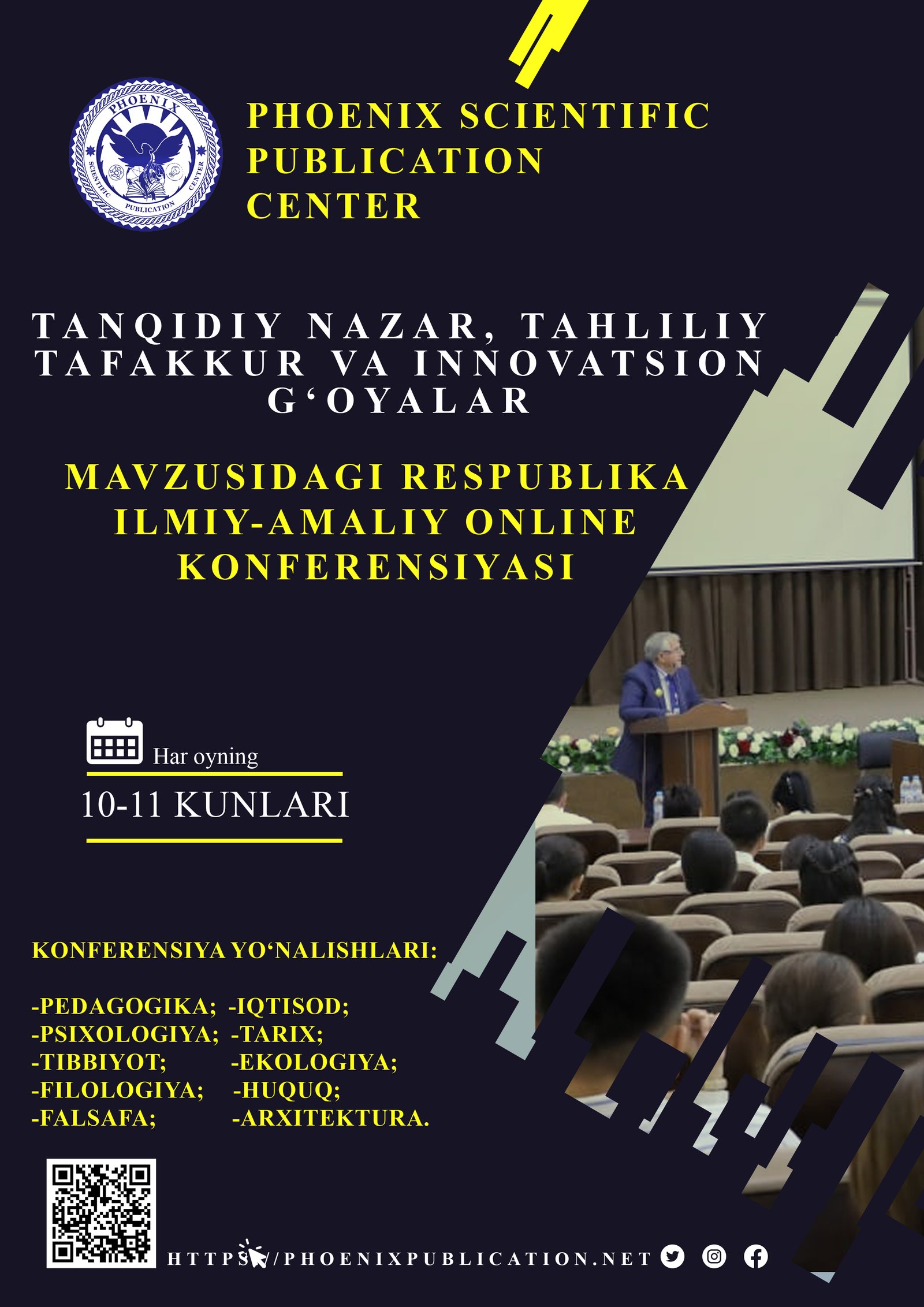Abstract
This article explores effective ways to develop critical thinking skills among primary school students using active learning methods. In an era of information overload, equipping young learners with the ability to analyze, evaluate, and make reasoned judgments is more important than ever. The paper discusses theoretical foundations of critical thinking, outlines the specific characteristics of young learners, and presents various active learning strategies—such as problem-solving, group discussions, and inquiry-based learning—that promote deeper engagement and cognitive development. Practical classroom applications and teacher roles are also examined.References
1. Bloom, B. S. (1956). Taxonomy of Educational Objectives: The Classification of Educational Goals. Longmans.
2. Dewey, J. (1933). How We Think. D.C. Heath & Co.
3. Facione, P. A. (2011). Critical Thinking: What It Is and Why It Counts. Insight Assessment.
4. Paul, R., & Elder, L. (2014). The Miniature Guide to Critical Thinking Concepts and Tools. Foundation for Critical Thinking.
5. Halpern, D. F. (2013). Thought and Knowledge: An Introduction to Critical Thinking. Psychology Press.
6. Marzano, R. J. (2007). The Art and Science of Teaching. ASCD.
7. Brookfield, S. D. (2012). Teaching for Critical Thinking: Tools and Techniques to Help Students Question Their Assumptions. Jossey-Bass.
8. Ministry of Preschool and School Education of Uzbekistan (2022). National Program for the Development of Public Education 2022–2026.
